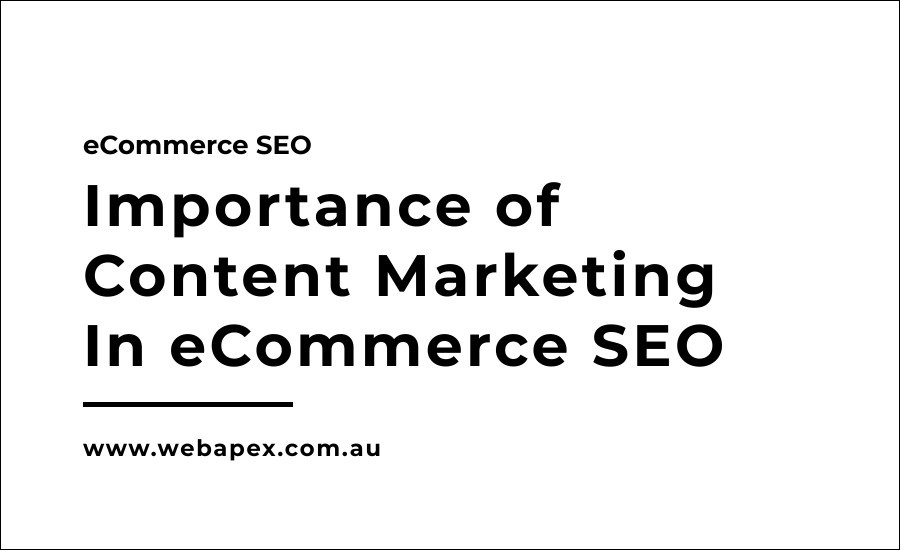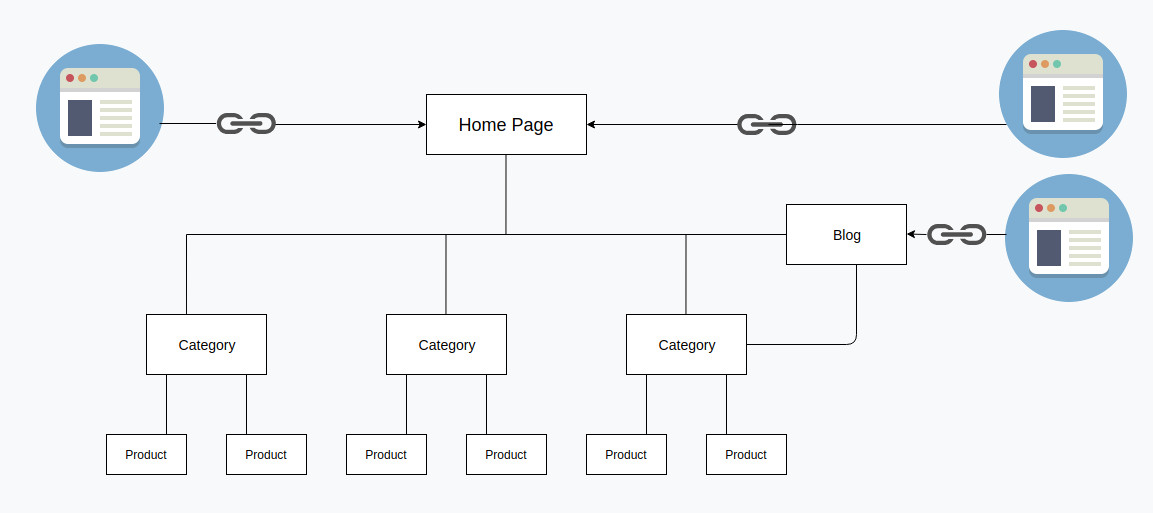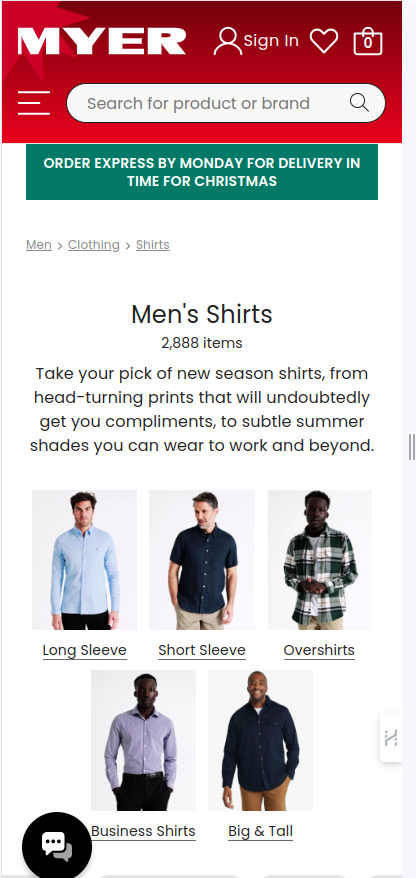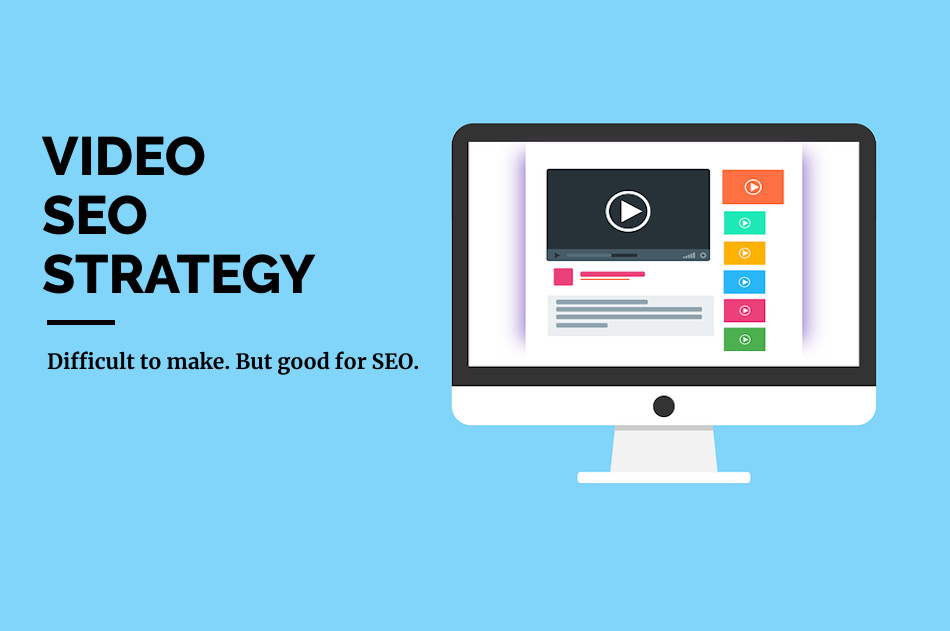Quality content serves as the foundation for achieving high search engine rankings across websites. However, when it comes to eCommerce platforms, the significance of content marketing becomes paramount.
By creating compelling and informative content, you’re not only catering to the informational needs of your potential customers but also signalling to search engines that your eCommerce site is a valuable resource in your niche.
It’s not just about populating your pages with text; it’s about strategically crafting content (possibly using the topical map) that empowers your main categories and drives your products or services to the forefront of search engine results. The creativity lies in planning get help from an expert SEO consultant to realise the potential.

Let’s understand the various aspects of content marketing and eCommerce SEO importance.
Boost eCommerce categories ranking with relevant silo content structure
Content marketing works well for eCommerce SEO, implementing an effective silo content structure emerges as a strategic imperative to enhance your website’s ranking. Unlike traditional site structures, a silo structure involves organising your content into distinct, thematic silos or categories. Each silo is dedicated to a specific product category or theme, allowing for a more streamlined and organised approach to content creation and internal linking.

One of the primary benefits of adopting a silo structure for an eCommerce site is the focused reinforcement of topical relevance and keyword association within each category. By structuring your content in this manner, you create a clear hierarchy that search engines can easily interpret, signalling the thematic significance of each category. This not only helps in boosting the authority of your intended categories but also contributes to the overall coherence and relevance of your eCommerce site.
Internal linking plays a pivotal role in fortifying the integrity of your silo structure. By strategically linking relevant content within a silo and across silos, you establish a network of contextual connections that strengthens the thematic focus of each category. This not only enhances user experience by facilitating intuitive navigation but also provides search engines with valuable signals about the interconnectedness of your content. Learn more about how to optimise eCommerce categories.
The importance of content in the categories
This is one of the missed eCommerce SEO opportunities by many businesses. Always have a short description in the category pages with well-intended copywriting to let users and search engines know about your category which will also help with SEO ranking.
Crafting a succinct yet informative product category description allows you to articulate the unique selling points, key features, and thematic relevance of the products within that category. From a user perspective, this provides valuable insights, guiding them through their purchasing journey and facilitating informed decision-making. Moreover, it fosters a sense of trust and authority, positioning your eCommerce store as an authoritative source within your niche.

From an SEO standpoint, category page content offers an ideal space to incorporate relevant keywords naturally. By aligning the content with the search intent of your target audience, you enhance the discoverability of your category pages on search engine results pages (SERPs). This strategic use of keywords in category descriptions contributes to a more comprehensive SEO strategy, ensuring that your eCommerce store is well-positioned for ranking across a spectrum of relevant search queries.
Building “How To” content for eCommerce SEO
Pushing “how to” content is a great way to build relevant content about the products and services you offer. It can bring regular traffic to the website and it can help boost the overall authority of the website. By crafting the art of “how to” articles and building relevant internal links you can boost the ranking of your main pages.

These valuable articles not only provide valuable insights into the practical use and application of your products and services but also position your eCommerce brand as an authoritative source within your industry. By explaining the intricacies of how your products can be effectively utilised, you not only foster a sense of transparency but also establish a connection with your audience, building trust and credibility.
The beauty of “how-to” content extends beyond its role as an informational resource. When strategically crafted, these articles become integral components of your internal linking strategy. By seamlessly integrating internal links within the “how-to” guides, you create a web of connectivity that directs users to relevant category & product pages, boosting the visibility and authority of your main eCommerce offerings.
Moreover, from an SEO perspective, “how-to” content can target specific keywords and search queries, aligning with the diverse ways your audience might seek information about your products. This not only enhances the discoverability of your eCommerce store on search engine results pages (SERPs) but also contributes to a comprehensive and diversified content portfolio.
If you are wondering about blog frequency to boost SEO ranking then “How To” articles can be a great resource to come up with a broad range of topics and meet the needs.
Building the brand & loyalty
Embarking on a content-centric approach for your eCommerce website goes beyond SEO gains to sell more products; it becomes a powerful instrument for brand building and fostering customer loyalty. The rationale is clear: as you generate and disseminate more content related to your products and services, you concurrently cultivate authority within your niche with greater visibility online.
The more content you produce, the more touchpoints you create for potential customers to engage with your brand. Each blog post, product description, or informative article becomes an opportunity to showcase your expertise, values, and unique selling propositions. This cumulative effect contributes to the establishment of your brand as an authoritative and trustworthy entity in your industry.
Building brand authority through content is not just about saturating your website with information; it’s about offering value to your audience. By providing insightful guides, expert tips, or in-depth analyses related to your products, you position your brand as more than just a transactional entity. You become a source of knowledge and assistance, establishing a deeper connection with your customers.
Moreover, as your brand authority grows, so does your credibility in the eyes of your audience. Trust is a foundational element of brand loyalty. When customers perceive your brand as a reliable source of information and expertise, they are more likely to return for future purchases. This loyalty is nurtured through the ongoing delivery of valuable content that aligns with their needs and preferences.
Optimise for conversion funnel
Not all visitors are ready to buy instantly rather they gather relevant information and match their needs. Crafting content strategies that align seamlessly with your eCommerce conversion funnel is a strategic imperative. Hence building content to address different stages of the conversion funnel is critically important.
At the top of the funnel, where users are in the awareness stage, informational blog content plays an important role. By understanding users’ concerns and effectively addressing them through blogs, you not only drive traffic and awareness but also initiate the process of building your brand. These blogs act as entry points, attracting users who are exploring solutions or seeking information related to your products or services.
Moving down the funnel, content can be tailored to guide users through the consideration stage. In-depth product guides, comparison articles, and user reviews serve as valuable resources for potential customers evaluating their options. This mid-funnel content assists in nurturing leads, providing them with the information they need to make informed decisions and inch closer to conversion.
As users progress towards the decision-making stage, content can help towards showcasing the unique selling propositions of your products or services. This might include case studies, success stories, or feature-focused content that reinforces the value proposition. The goal here is to win confidence in your offerings and propel users towards the final step of the conversion funnel.
Optimising your content to match the various touchpoints of the conversion journey not only facilitates a smoother customer experience but also maximises the likelihood of conversion. By delivering the right content at the right stage, you cater to users’ evolving needs, foster engagement, and position your brand as a valuable guide throughout their decision-making process.
Building linkable assets to acquire natural links
Building linkable assets with search intent in mind with appropriate relevant industry data and figures has a high potential to acquire natural links.
Building powerful linkable assets is one of the best ways to get natural links to boost eCommerce SEO performance.
These assets can take various forms, including comprehensive guides, original research studies, interactive tools, or visually engaging infographics. When strategically aligned with search intent, these assets become authoritative pillars within your industry, attracting attention and links organically.
Integrating industry-specific data and statistics into your content not only adds credibility but also enhances its linkable appeal. Audiences, including other websites and influencers, are more likely to reference and link to content that provides valuable insights, backed by data. This not only contributes to your site’s authority but also positions your eCommerce brand as an authoritative source within your niche.
The process involves understanding your audience’s needs, identifying gaps in existing content, and crafting assets that not only fill those gaps but also surpass competing resources. The goal is to become a go-to reference within your industry, prompting others to link to your valuable content as a point of authority.
How to get started
The best way to achieve eCommerce success is by working with a content marketing expert right at the eCommerce website design level.
We at webapex do exactly that, we plan, design and build an eCommerce content strategy that works. Get in touch with us today!